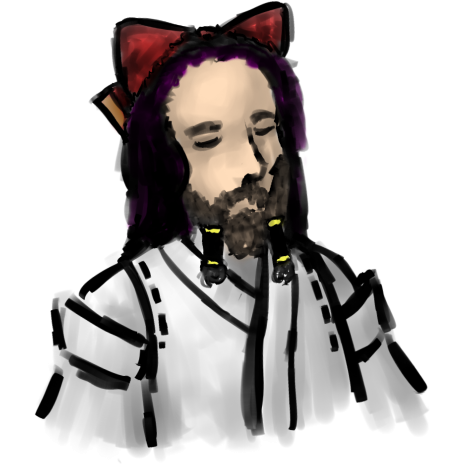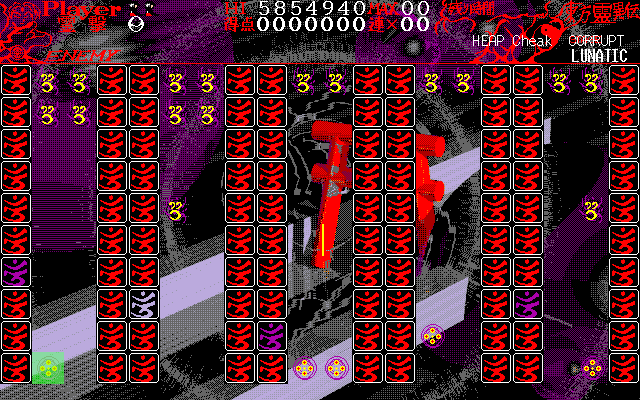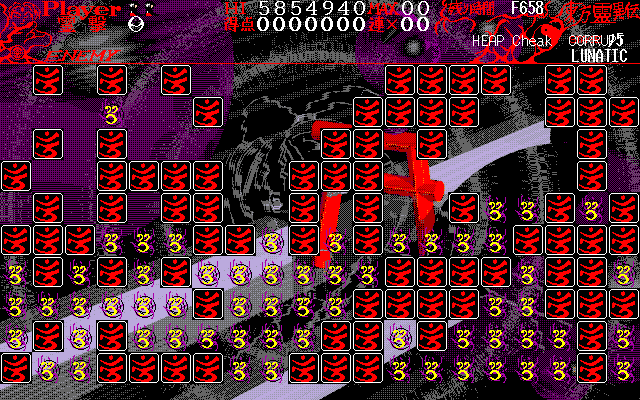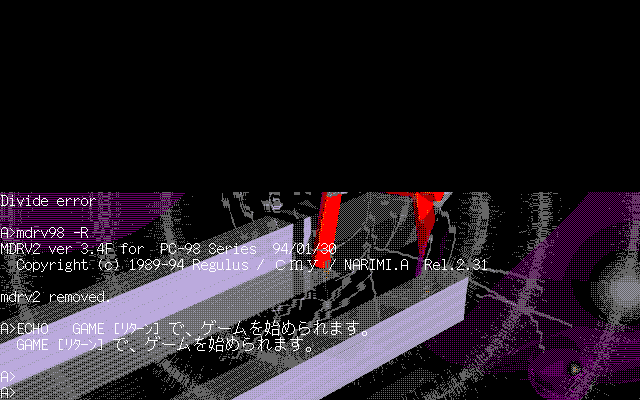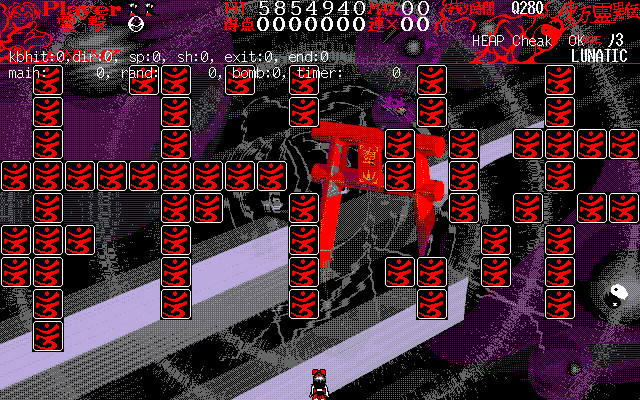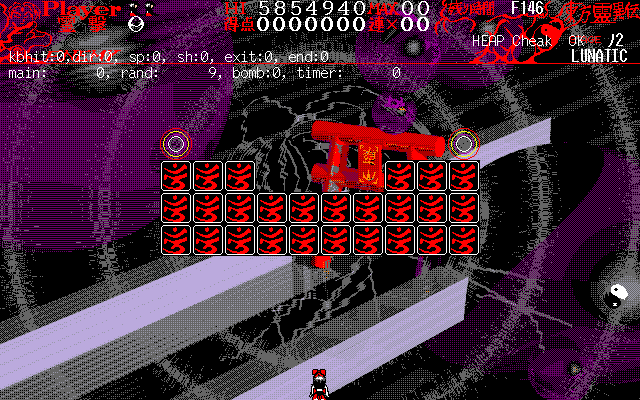- 📝 Posted:
- 🚚 Summary of:
- P0238, P0239
- ⌨ Commits:
- (Website)
4698397...edf2926,c5e51e6...P0239 - 💰 Funded by:
- Ember2528
- 🏷 Tags:
Stripe is now
properly integrated into this website as an alternative to PayPal! Now, you
can also financially support the project if PayPal doesn't work for you, or
if you prefer using a
provider out of Stripe's greater variety. It's unfortunate that I had to
ship this integration while the store is still sold out, but the Shuusou
Gyoku OpenGL backend has turned out way too complicated to be finished next
to these two pushes within a month. It will take quite a while until the
store reopens and you all can start using Stripe, so I'll just link back to
this blog post when it happens.
Integrating Stripe wasn't the simplest task in the world either. At first,
the Checkout API
seems pretty friendly to developers: The entire payment flow is handled on
the backend, in the server language of your choice, and requires no frontend
JavaScript except for the UI feedback code you choose to write. Your
backend API endpoint initiates the Stripe Checkout session, answers with a
redirect to Stripe, and Stripe then sends a redirect back to your server if
the customer completed the payment. Superficially, this server-based
approach seems much more GDPR-friendly than PayPal, because there are no
remote scripts to obtain consent for. In reality though, Stripe shares
much more potential personal data about your credit card or bank
account with a merchant, compared to PayPal's almost bare minimum of
necessary data. ![]()
It's also rather annoying how the backend has to persist the order form
information throughout the entire Checkout session, because it would
otherwise be lost if the server restarts while a customer is still busy
entering data into Stripe's Checkout form. Compare that to the PayPal
JavaScript SDK, which only POSTs back to your server after the
customer completed a payment. In Stripe's case, more JavaScript actually
only makes the integration harder: If you trigger the initial payment
HTTP request from JavaScript, you will have
to improvise a bit to avoid the CORS error when redirecting away to a
different domain.
But sure, it's all not too bad… for regular orders at least. With
subscriptions, however, things get much worse. Unlike PayPal, Stripe
kind of wants to stay out of the way of the payment process as much as
possible, and just be a wrapper around its supported payment methods. So if
customers aren't really meant to register with Stripe, how would they cancel
their subscriptions? ![]()
Answer: Through
the… merchant? Which I quite dislike in principle, because why should
you have to trust me to actually cancel your subscription after you
requested it? It also means that I probably should add some sort of UI for
self-canceling a Stripe subscription, ideally without adding full-blown user
accounts. Not that this solves the underlying trust issue, but it's more
convenient than contacting me via email or, worse, going through your bank
somehow. Here is how my solution works:
- When setting up a Stripe subscription, the server will generate a random ID for authentication. This ID is then used as a salt for a hash of the Stripe subscription ID, linking the two without storing the latter on my server.
- The
thank you
page, which is parameterized with the Stripe Checkout session ID, will use that ID to retrieve the subscription ID via an API call to Stripe, and display it together with the above salt. This works indefinitely – contrary to what the expiry field in the Checkout session object suggests, Stripe sessions are indeed stored forever. After all, Stripe also displays this session information in a merchant's transaction log with an excessive amount of detail. It might have been better to add my own expiration system to these pages, but this had been taking long enough already. For now, be aware that sharing the link to a Stripethank you
page is equivalent to sharing your subscription cancellation password. - The salt is then used as the key for a subscription management page. To cancel, you visit this page and enter the Stripe subscription ID to confirm. The server then checks whether the salt and subscription ID pair belong to each other, and sends the actual cancellation request back to Stripe if they do.
I might have gone a bit overboard with the crypto there, but I liked the idea of not storing any of the Stripe session IDs in the server database. It's not like that makes the system more complex anyway, and it's nice to have a separate confirmation step before canceling a subscription.
But even that wasn't everything I had to keep in mind here. Once you
switch from test to production mode for the final tests, you'll notice that
certain SEPA-based
payment providers take their sweet time to process and activate new
subscriptions. The Checkout session object even informs you about that, by
including a payment status
field. Which initially seems just like
another field that could indicate hacking attempts, but treating it as such
and rejecting any unpaid session can also reject perfectly valid
subscriptions. I don't want all this control… 🥲
Instead, all I can do in this case is to tell you about it. In my test, the
Stripe dashboard said that it might take days or even weeks for the initial
subscription transaction to be confirmed. In such a case, the respective
fraction of the cap will unfortunately need to remain red for that entire time.
And that was 1½ pushes just to replicate the basic functionality of a simple PayPal integration with the simplest type of Stripe integration. On the architectural site, all the necessary refactoring work made me finally upgrade my frontend code to TypeScript at least, using the amazing esbuild to handle transpilation inside the server binary. Let's see how long it will now take for me to upgrade to SCSS…
With the new payment options, it makes sense to go for another slight price
increase, from up to per push.
The amount of taxes I have to pay on this income is slowly becoming
significant, and the store has been selling out almost immediately for the
last few months anyway. If demand remains at the current level or even
increases, I plan to gradually go up to by the end
of the year.
📝 As 📝 usual,
I'm going to deliver existing orders in the backlog at the value they were
originally purchased at. Due to the way the cap has to be calculated, these
contributions now appear to have increased in value by a rather awkward
13.33%.
This left ½ of a push for some more work on the TH01 Anniversary Edition. Unfortunately, this was too little time for the grand issue of removing byte-aligned rendering of bigger sprites, which will need some additional blitting performance research. Instead, I went for a bunch of smaller bugfixes:
-
ANNIV.EXEnow launchesZUNSOFT.COMif MDRV98 wasn't resident before. In hindsight, it's completely obvious why this is the right thing to do: Either you startANNIV.EXEdirectly, in which case there's no resident MDRV98 and you haven't seen the ZUN Soft logo, or you have made a single-line edit toGAME.BATand replacedopwithanniv, in which case MDRV98 is resident and you have seen the logo. These are the two reasonable cases to support out of the box. If you are doing anything else, it shouldn't be that hard to adjust though?You might be wondering why I didn't just include all code of
ZUNSOFT.COMinsideANNIV.EXEtogether with the rest of the game. The reason:ZUNSOFT.COMhas almost nothing in common with regular TH01 code. While the rest of TH01 uses the custom image formats and bad rendering code I documented again and again during its RE process,ZUNSOFT.COMfully relies on master.lib for everything about the bouncing-ball logo animation. Its code is much closer to TH02 in that respect, which suggests that ZUN did in fact write this animation for TH02, and just included the binary in TH01 for consistency when he first sold both games together at Comiket 52. Unlike the 📝 various bad reasons for splitting the PC-98 Touhou games into three main executables, it's still a good idea to split off animations that use a completely different set of rendering and file format functions. Combined with all the BFNT and shape rendering code,ZUNSOFT.COMactually contains even more unique code thanOP.EXE, and only slightly less thanFUUIN.EXE. The optional
AUTOEXEC.BATis now correctly encoded in Shift-JIS instead of accidentally being UTF-8, fixing the previous mojibake in its finalECHOline.-
The command-line option that just adds a stage selection without other debug features (
anniv s) now works reliably.This one's quite interesting because it only ever worked because of a ZUN bug. From a superficial look at the code, it shouldn't: While the presence of an
's'branch proves that ZUN had such a mode during development, he nevertheless forgot to initialize the debug flag inside the resident structure within this branch. This mode only ever worked because master.lib'sresdata_create()function doesn't clear the resident structure after allocation. If anything on the system previously happened to write something other than0x00,0x01, or0x03to the specific byte that then gets repurposed as the debug mode flag, this lack of initialization does in fact result in a distinct non-test and non-debug stage selection mode.
This is what happens on a certain widely circulated .HDI copy of TH01 that boots MS-DOS 3.30C. On this system, the memory that master.lib will allocate to the TH01 resident structure was previously used by DOS as stack for its kernel, which left the future resident debug flag byte at address9FF6:0012at a value of0x12. This might be the entire reason whygame sis even widely documented to trigger a stage selection to begin with – on the widely circulated TH04 .HDI that boots MS-DOS 6.20, or on DOSBox-X, thesparameter doesn't work because both DOS systems leave the resident debug flag byte at0x00. And sinceANNIV.EXEpushes MDRV98 into that area of conventional DOS RAM,anniv spreviously didn't work even on MS-DOS 3.30C. Both bugs in the 📝 1×1 particle system during the Mima fight have been fixed. These include the off-by-one error that killed off the very first particle on the 80th frame and left it in VRAM, and, just like every other entity type, a replacement of ZUN's EGC unblitter with the new pixel-perfect and fast one. Until I've rearchitected unblitting as a whole, the particles will now merely rip barely visible 1×1 holes into the sprites they overlap.
The 📝 score popups for flipped cards are now displayed without the two frames of flicker.
-
The
bombvalue shown in the lowest line of the in-game debug mode output is now right-aligned together with the rest of the values. This ensures that the game always writes a consistent number of characters to TRAM, regardless of the magnitude of thebombvalue, preventing the seemingly wrongtimervalues that appeared in the original game whenever the value of thebombvariable changed to a lower number of digits: Finally, I've streamlined VRAM page access changes, which allowed me to consistently replace ZUN's expensive function call with the optimal two inlined x86 instructions. Interestingly, this change alone removed 2 KiB from the binary size, which is almost all of the difference between 📝 the P0234-1 release and this one. Let's see how much longer we can make each new release of
ANNIV.EXEsmaller than the previous one.
The final point, however, raised the question of what we're now going to do
about
📝 a certain issue in the 地獄/Jigoku Bad Ending.
ZUN's original expensive way of switching the accessed VRAM page was the
main reason behind the lag frames on slower PC-98 systems, and
search-replacing the respective function calls would immediately get us to
the optimized version shown in that blog post. But is this something we
actually want? If we wanted to retain the lag, we could surely preserve that
function just for this one instance…
The discovery of this issue
predates the clear distinction between bloat, quirks, and bugs, so it makes
sense to first classify what this issue even is. The distinction comes all
down to observability, which I defined as changes to rendered frames
between explicitly defined frame boundaries. That alone would be enough to
categorize any cause behind lag frames as bloat, but it can't hurt to be
more explicit here.
Therefore, I now officially judge observability in terms of an infinitely fast PC-98 that can instantly render everything between two explicitly defined frames, and will never add additional lag frames. If we plan to port the games to faster architectures that aren't bottlenecked by disappointing blitter chips, this is the only reasonable assumption to make, in my opinion: The minimum system requirements in the games' README files are minimums, after all, not recommendations. Chasing the exact frame drop behavior that ZUN must have experienced during the time he developed these games can only be a guessing game at best, because how can we know which PC-98 model ZUN actually developed the games on? There might even be more than one model, especially when it comes to TH01 which had been in development for at least two years before ZUN first sold it. It's also not like any current PC-98 emulator even claims to emulate the specific timing of any existing model, and I sure hope that nobody expects me to import a bunch of bulky obsolete hardware just to count dropped frames.
That leaves the tearing, where it's much more obvious how it's a bug. On an infinitely fast PC-98, the ドカーン frame would never be visible, and thus falls into the same category as the 📝 two unused animations in the Sariel fight. With only a single unconditional 2-frame delay inside the animation loop, it becomes clear that ZUN intended both frames of the animation to be displayed for 2 frames each:
![]() TH01 Anniversary Edition, version P0239
2023-05-01-th01-anniv.zip
TH01 Anniversary Edition, version P0239
2023-05-01-th01-anniv.zip
Next up: Taking the oldest still undelivered push and working towards TH04 position independence in preparation for multilingual translations. The Shuusou Gyoku OpenGL backend shouldn't take that much longer either, so I should have lots of stuff coming up in May afterward.
